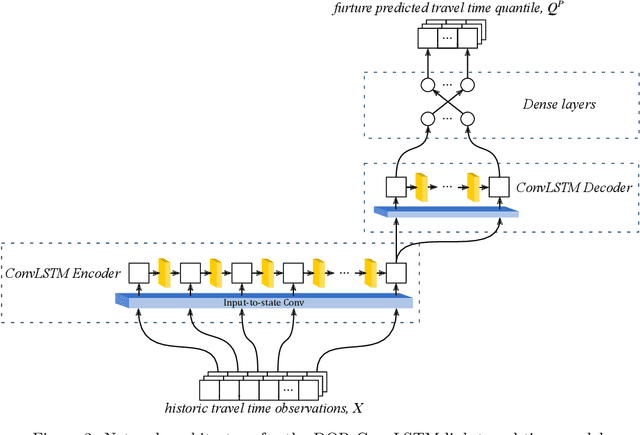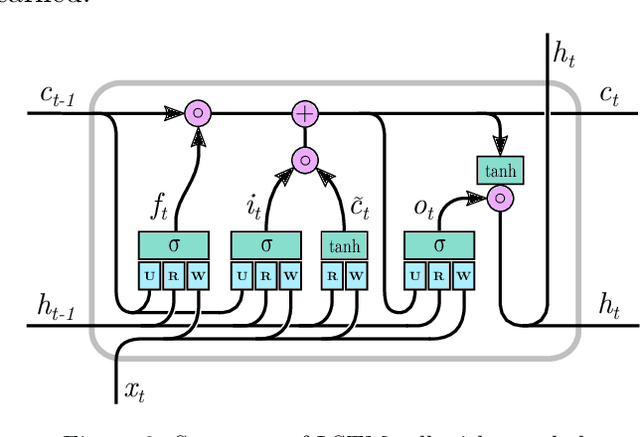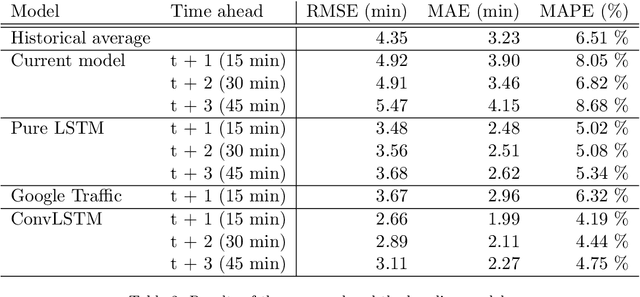Niklas Christoffer Petersen
Short-term bus travel time prediction for transfer synchronization with intelligent uncertainty handling
Apr 14, 2021



Abstract:This paper presents two novel approaches for uncertainty estimation adapted and extended for the multi-link bus travel time problem. The uncertainty is modeled directly as part of recurrent artificial neural networks, but using two fundamentally different approaches: one based on Deep Quantile Regression (DQR) and the other on Bayesian Recurrent Neural Networks (BRNN). Both models predict multiple time steps into the future, but handle the time-dependent uncertainty estimation differently. We present a sampling technique in order to aggregate quantile estimates for link level travel time to yield the multi-link travel time distribution needed for a vehicle to travel from its current position to a specific downstream stop point or transfer site. To motivate the relevance of uncertainty-aware models in the domain, we focus on the connection assurance application as a case study: An expert system to determine whether a bus driver should hold and wait for a connecting service, or break the connection and reduce its own delay. Our results show that the DQR-model performs overall best for the 80%, 90% and 95% prediction intervals, both for a 15 minute time horizon into the future (t + 1), but also for the 30 and 45 minutes time horizon (t + 2 and t + 3), with a constant, but very small underestimation of the uncertainty interval (1-4 pp.). However, we also show, that the BRNN model still can outperform the DQR for specific cases. Lastly, we demonstrate how a simple decision support system can take advantage of our uncertainty-aware travel time models to prioritize the difference in travel time uncertainty for bus holding at strategic points, thus reducing the introduced delay for the connection assurance application.
Multi-output Bus Travel Time Prediction with Convolutional LSTM Neural Network
Mar 07, 2019



Abstract:Accurate and reliable travel time predictions in public transport networks are essential for delivering an attractive service that is able to compete with other modes of transport in urban areas. The traditional application of this information, where arrival and departure predictions are displayed on digital boards, is highly visible in the city landscape of most modern metropolises. More recently, the same information has become critical as input for smart-phone trip planners in order to alert passengers about unreachable connections, alternative route choices and prolonged travel times. More sophisticated Intelligent Transport Systems (ITS) include the predictions of connection assurance, i.e. to hold back services in case a connecting service is delayed. In order to operate such systems, and to ensure the confidence of passengers in the systems, the information provided must be accurate and reliable. Traditional methods have trouble with this as congestion, and thus travel time variability, increases in cities, consequently making travel time predictions in urban areas a non-trivial task. This paper presents a system for bus travel time prediction that leverages the non-static spatio-temporal correlations present in urban bus networks, allowing the discovery of complex patterns not captured by traditional methods. The underlying model is a multi-output, multi-time-step, deep neural network that uses a combination of convolutional and long short-term memory (LSTM) layers. The method is empirically evaluated and compared to other popular approaches for link travel time prediction and currently available services, including the currently deployed model in Copenhagen, Denmark. We find that the proposed model significantly outperforms all the other methods we compare with, and is able to detect small irregular peaks in bus travel times very quickly.
 Add to Chrome
Add to Chrome Add to Firefox
Add to Firefox Add to Edge
Add to Edge